04. 音符与面板数量
在本章中,我们将设置音符原型并实现计算面板数量。
音符原型
让我们首先设置音符原型:
export class Note extends Archetype {}
export class Note extends Archetype {}
export const archetypes = defineArchetypes({
// ...
Note,
})
export const archetypes = defineArchetypes({
// ...
Note,
})
持续时间
如果我们知道了持续时间,我们就可以用它来计算面板数量。
那么我们如何获取持续时间呢?一个简单的方法就是使用一个变量存储一个关卡的时长,并在我们访问音符时更新它。
让我们使用 Preview Data 区块声明它:
export const chart = previewData({
duration: Number,
})
export const chart = previewData({
duration: Number,
})
更新持续时间
为了计算音符时间,我们需要知道它的节拍。我们可以像游玩模式一样声明它:
export class Note extends Archetype {
import = this.defineImport({
beat: { name: EngineArchetypeDataName.Beat, type: Number },
})
}
export class Note extends Archetype {
import = this.defineImport({
beat: { name: EngineArchetypeDataName.Beat, type: Number },
})
}
在音符原型的 preprocess 回调函数中,如果音符时间更大,我们将更新持续时间:
export class Note extends Archetype {
// ...
preprocess() {
chart.duration = Math.max(chart.duration, bpmChanges.at(this.import.beat).time)
}
}
export class Note extends Archetype {
// ...
preprocess() {
chart.duration = Math.max(chart.duration, bpmChanges.at(this.import.beat).time)
}
}
面板数量
现在我们可以根据持续时间计算并更新面板数量:
export const panel = {
// ...
get count() {
return Math.ceil(chart.duration / this.h)
},
}
export const panel = {
// ...
get count() {
return Math.ceil(chart.duration / this.h)
},
}
画布
最后,我们需要在所有音符都更新持续时间完成后,确保计算画布大小代码的正常执行。
我们可以将代码移动到舞台原型的 preprocess 回调函数并给予其一个更高的顺序:
export class Stage extends Archetype {
preprocessOrder = 1
preprocess() {
canvas.set({
scroll: Scroll.LeftToRight,
size: (panel.count * panel.w * screen.h) / 20,
})
}
// ...
}
export class Stage extends Archetype {
preprocessOrder = 1
preprocess() {
canvas.set({
scroll: Scroll.LeftToRight,
size: (panel.count * panel.w * screen.h) / 20,
})
}
// ...
}

